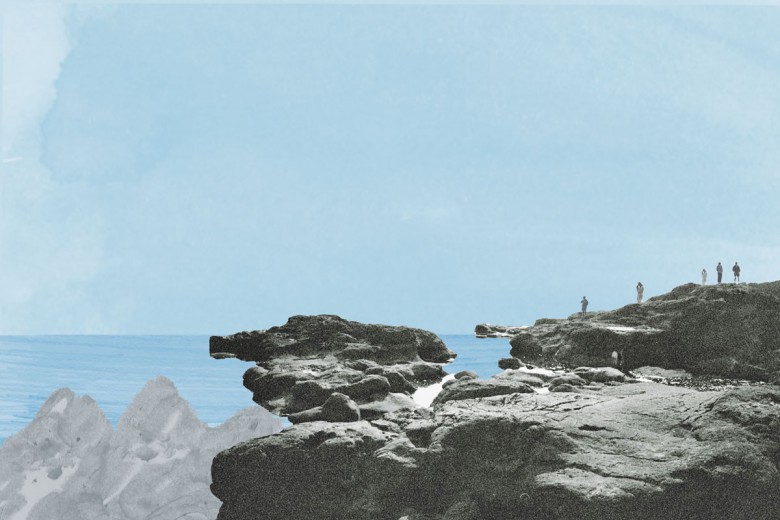
The Standing Rock stand-off has cooled for now, but the Morton County Sherriff Department continues to stoke the flames, posting a video series to their Twitter page called “Know the Truth” that seeks to change public understanding of the protests against the Dakota Access Pipeline. In the first video of the series, Morton County Sheriff Kyle Kirchmeier sets the frame: “These are short narratives that will tell you the real story.”
In one video, Cass County Sheriff Paul D. Laney says of the water protectors: “A lot of the times, the militant ones will disguise themselves in there and the next thing we know, what we thought was going to be peaceful or prayerful, now they’re coming for us.”
The sheriffs’ framing is manifestly biased, of course. This is because, as contributor Phillip Dwight Morgan writes in this issue’s cover story, “police serve to enforce dominant class rule.” Dominant class rule is served when those who resist capital, police presence, and surveillance are cast as violent, unlawful, and unreasonable.
Why should it matter that the Morton County Sheriff’s Department tweeted these videos? Because while police take to social media to directly disseminate their messages to communities, critical journalism is in freefall. This is not to say that journalists have failed to cover the resistance to DAPL; the events have been well reported by independent journalists and frontline reporters and by independent media venues like Democracy Now! and Unicorn Riot. Even some mainstream venues provided thorough coverage. But overall, mainstream journalism is simply not holding the feet of power elites to the flame.
Police framing will always reinforce its own legitimacy, but when abuses go unreported, their self-serving narrative will be the only side of the story many folks hear.
The Indymedia Montreal 2016 Convergence Group (see “Holding Out for Un-alienated Communication” in this issue) convincingly argues that corporate media cannot simply can’t be trusted to ask the hard questions our collective survival depends upon. History has taught us that mainstream media is critical of protestors; at the WTO meetings in Seattle, for example, the mainstream media offered “stereotyped spectacle of violent activists clashing with police at the expense of reporting on social justice issues,” writes the group. Reporting on stories involving Indigenous resistance to colonial policies and events is often particularly distorted. As Mark Cronlund Anderson and Carmen Robertson write in Seeing Red: A History of Natives in Canadian Newspapers (2011), “Colonial representations as common sense, naturalized and totalized, comprise the guts of what reflects Canada’s past and present colonial imaginary in the printed press.”
Activists have generated awesome success in recent years by “being the media” and reporting from the front lines of movements on social media sites like Facebook, YouTube, and Twitter. But the impulse to funnel all of our activism through social media requires our critical attention. Social media, after all, introduces powerful mechanisms of surveillance that activists would be remiss to ignore.
As Nickita Longman notes in her article “Deep Cuts” in this issue, Sylvia McAdam Saysewahum has noticed that employees of the logging company responsible for clear cutting her land are surveilling her on Twitter, possibly monitoring when she is away from home. More surreptitious surveillance has taken place at Standing Rock, where protectors have reported that Gmail accounts were hacked and Stingray technology was likely deployed by police to monitor phones and cut data signals. Surveillance not only intimidates and interferes, but also enables companies to collect the personal information of users. The Indymedia Convergence Group writes, “One investor [of the CIA’s venture capital wing, In-Q-Tel] recently referred to the user data captured through social media as ‘the new oil.’”
While the Indymedia network is building technologies that can facilitate grassroots reporting without surveillance or corporate interference, we cannot ignore the way that power is constructed and maintained outside of these networks. In his story on police officers stationed in high schools across Toronto, Morgan points out that school resource officers, as they’re called, “are well-resourced police officers. Perhaps by accurately naming their positions, we can begin to cut through their authority.”
We should continue to develop our understanding of the role of the surveillance industry in social media. The achievements of grassroots reporting and the “Know the Truth” videos reveal the uncomfortable truth that social media is a powerful tool both for and against social movements. Our ability to build stable movements rooted in accurate information and solid analysis depends on our understanding of that very relationship.






